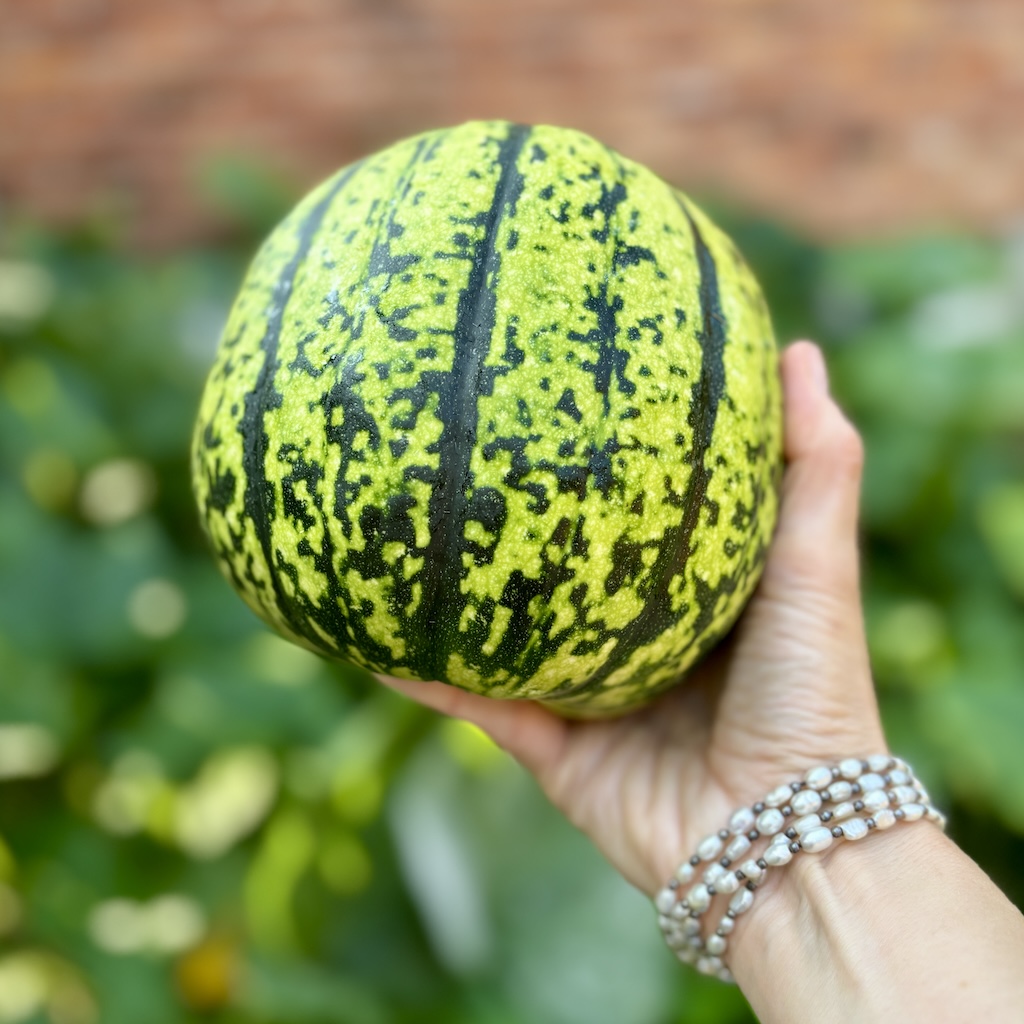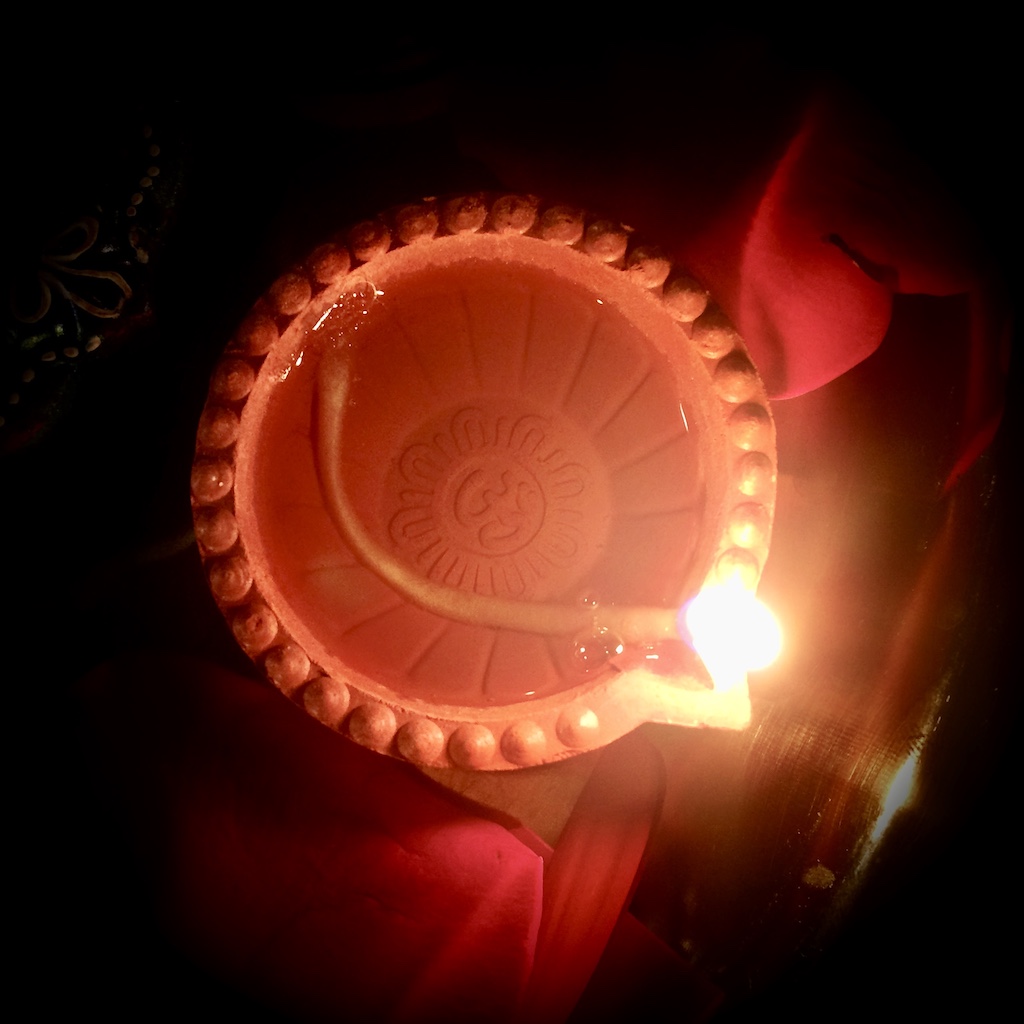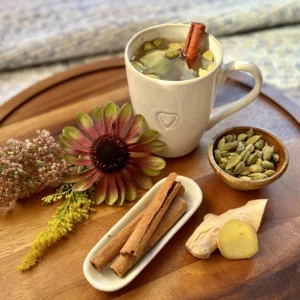Each person is born with a unique prakriti—their natural constitution of vata, pitta, and kapha. Lifelong health depends on maintaining this innate balance:
- Vata governs movement—nervous impulses, breath, and circulation.
- Pitta governs transformation—digestion, metabolism, and intellect.
- Kapha governs structure—tissue formation, lubrication, and stability.
While each dosha must be balanced, this must occur in accordance with your individual nature. What is balancing for one may not be for another. When vata and pitta are in harmony, kapha is properly formed, leading to strong, resilient tissues.

Agni and Ama: Digestive Strength and Clarity
At the heart of nourishment is agni—the digestive and metabolic fire responsible for transforming food and experience into usable tissue and energy.
- When agni is balanced, digestion is efficient, energy is stable, and ama (toxins from undigested food and experience) is minimal.
- Ama arises when digestion is too high, too low, or variable, leading to imbalanced doshas, heaviness, blockage, and disease.
Balanced agni ensures that nutrients pass through a refining digestive process across the seven dhatus (tissues of the body):
- Rasa (plasma),
- Rakta (blood),
- Mamsa (muscle),
- Meda (fat),
- Asthi (bone),
- Majja (marrow/nervous tissue),
- Shukra (reproductive tissue).
Each dhatu depends on the proper functioning of the previous one and its own localized agni.
Dhatus and the Foundation for Vitality, Wisdom, and Immunity
As nourishment flows through each dhatu, it becomes increasingly refined. The final and most subtle dhatu, shukra (reproductive tissue), plays a crucial role in the formation of ojas, which is considered the essence of all seven tissues.
- High-quality reproductive tissue (shukra dhatu) is essential for the generation of ojas, which provides the body with deep immunity, emotional stability, and endurance.
- Balanced doshas ensure that each stage of tissue formation is pure and complete, allowing ojas to be strong.
On this foundation of ojas, the body develops:
- Vitality through prana,
- Wisdom and clarity through tejas,
- Immunity and resilience through ojas itself.
If any dhatu is improperly nourished, particularly shukra, the formation of ojas is compromised, leading to fatigue, discontentment, and susceptibility to disease.

The Three Disease Pathways in Ayurveda
Ayurveda identifies three primary pathways through which disease can develop and spread in the body. Health depends on keeping these channels clear and nourished:
- Inner Pathway – Focuses on the gastrointestinal tract. Disease often begins here through poor digestion, leading to the buildup of ama and internal imbalances as Doshas begin to accumulate in the main seats of the stomach (Kapha), small intestine (Pitta) and colon (Vata).
- Outer Pathway – The first two dhatus of rasa (lymphatic tissue) and rakta (blood) including the skin. Imbalances manifest outwardly, often as skin issues, muscular discomfort, or generalized fatigue, aches and pain.
- Central Pathway – Encompasses the last five dhatus (muscle, fat, bone, marrow/nerve tissue and reproductive tissue). These are the most deep-seated areas where chronic conditions, emotional disturbances, and autoimmune imbalances tend to manifest.
When agni is strong and ama is low, these pathways remain open, allowing energy, nourishment, and vitality to flow freely. When blocked, the process of disease begins with symptoms that start in the Inner Pathway and with time travel through the Outer to the Central. Symptoms becomes more difficult to manage, especially as they progress into the Central Pathway. At this stage issues become chronic or labelled as “disease” and require more intense therapies such as Ayurvedic Purification (Panchakarma) to heal.
Prana, Tejas, and Ojas: A Unified Cultivation
From the balance of doshas, strong agni, and properly nourished dhatus arise prana, tejas, and ojas:
- Prana is the life force that animates the body through breath, circulation, and vitality.
- Tejas is the subtle fire of metabolism, intellect, and spiritual radiance.
- Ojas is the essence of immunity, stability, and deep nourishment; the foundation of resilience and longevity.
These three subtle essences must unfold together. They are interdependent, and excess in one can disturb the others. Think of a diya (ghee lamp) and the interplay between the nourishment (ghee or oil), the flame and the energy radiated.
- Excess prana may scatter energy, overstimulating tejas and depleting ojas.
- Excess tejas may overheat the system, burning up ojas and unbalancing prana.
- Excess ojas can smother tejas resulting in stagnation, heaviness, and lethargy and loss of prana.
Their cultivation is a precious, gradual process that requires patience and care. It cannot be forced. Over time, this balanced increase of Prana, Tejas and Ojas leads to:
- Emotional resilience – the ability to remain steady amidst life’s challenges
- Immunity on all levels – physical, mental, and subtle protection
- Clarity of truth – the capacity to perceive clearly and live with purpose
- All unfolding a deep sense of inner contentment, confidence and vitality
Feelings of deep satisfaction and trust in the universe are signs that ojas is abundant and well-nourished.

Cultivating Prana, Tejas, and Ojas: Practices and Signs of Imbalance
These subtle essences are cultivated gradually through mindful living, proper nourishment, and alignment with nature. Each essence shows specific signs when deficient and can be strengthened through simple, intentional practices.
Prana – Vital Life Force
Signs of Low Prana:
- Fatigue or low energy despite rest.
- Shallow or irregular breathing.
- Lack of enthusiasm or vitality.
- Poor circulation, frequent colds.
Simple Ways to Cultivate Prana:
- Conscious Breathing: Practice pranayama (e.g., Nadi Shodhana – alternate nostril breathing) to enhance life force.
- Time in Nature: Spend time outdoors, especially in fresh, natural environments.
- Gentle Movement: Engage in gentle yoga or mindful walking to stimulate flow.
- Fresh Food: Favour wholesome food, fresh, seasonal fruits and vegetables rich in prana.
Tejas – Inner Radiance and Transformative Power
Signs of Low Tejas:
- Dullness in skin, eyes, or thoughts.
- Slow or weak digestion.
- Lack of clarity, motivation, or insight.
- Difficulty assimilating ideas or learning.
Simple Ways to Cultivate Tejas:
- Spices in Diet: Use digestive churna and favour spices like ginger, cumin, turmeric to kindle digestive fire.
- Focused Meditation: Practice Trataka (gazing at a candle flame) to sharpen inner clarity.
- Purposeful Action: Engage in meaningful activities that spark passion and delight.
- Morning Sunlight: Spend time in morning sun to support natural inner light.
Ojas – Essence of Immunity, Stability, and Contentment
Signs of Low Ojas:
- Weak immunity, frequent illness or slow recovery.
- Dry, pale skin; poor tissue tone.
- Emotional instability, anxiety, or fear.
- Lack of endurance, physically and emotionally.
- A persistent lack of contentment, restlessness, or inability to feel deeply nourished or safe.
Simple Ways to Cultivate Ojas:
- Rest and Rejuvenation: Prioritize deep, restful sleep and periods of true relaxation.
- Ojas-Building Foods: Include ghee, almonds, dates, warm spiced milk, and well-cooked grains in your diet.
- Nourishing Relationships: Foster loving, stable, and supportive connections. Emotional warmth and positive associations enhances ojas.
- Self-Massage (Abhyanga): Daily oil massage with warm sesame or almond oil calms the mind and strengthens the body’s resilience.
Nourishment and Balance in Ayurveda
True vitality in Ayurvedic Healing begins with balancing your doshas, harmozining your agni, and refining deep and lasting nourishment through the seven dhatus. On this foundation, the subtle essences of prana, tejas, and ojas naturally arise, supporting energy, clarity, resilience, and deep immunity. High-quality reproductive tissue (shukra dhatu) acts as the gateway to strong ojas, linking physical, emotional, and spiritual wellbeing.
When prana flows smoothly, tejas shines brightly, and ojas anchors the system with strength, we experience not just health, but a vibrant sense of purpose and protection. This unfolding is a patient, sacred process—one that nourishes the entire being from the inside out. And rests as the foundation of deeper spiritual practice and the ability to hold and sustain higher states of conciousness.
Awaken the vitality within you. Tend to your digestion, balance your energies, and allow the subtle glow of prana, tejas, and ojas to light your path forward.


